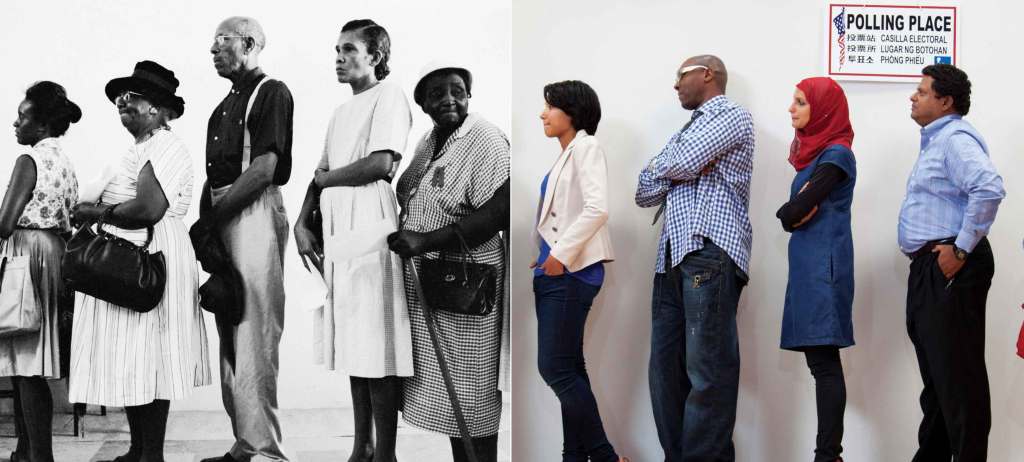 Flip Schulke/CORBIS and Hill Street Studios/Blend Images/Corbis
Flip Schulke/CORBIS and Hill Street Studios/Blend Images/CorbisThe Voting Rights Act, signed into law on August 6, 1965, was meant to correct what President Lyndon Johnson called “a clear and simple wrong”: The fact that millions of Americans were being denied the right to vote because of the color of their skin.
But righting the simple wrong would prove to be far from straightforward. As Jim Rutenberg outlined in a standout feature for The New York Times Magazine, over the past five decades there have been systematic attempts to dismantle the law. Many of those seeking to undermine it dismiss the Voting Rights Act as having “done its job.” But as Rutenberg shows, efforts to unravel it are as old as the law itself.
Another issue that has faced opposition from its earliest stages? School integration. As Rutenberg’s article was published, This American Life dedicated the first of two radio episodes to desegregation’s complicated past and present. Listening to this episode and reading Rutenberg’s piece back to back, the parallels are striking. Investigative reporter Nikole Hannah-Jones explains that between 1971, when the U.S. started a large-scale effort to integrate schools, and desegregation’s peak in 1988, the achievement gap between white and black students was cut in half. But then desegregation efforts declined, and the achievement gap started to wide again.
“We somehow want this to have been easy,” Hannah-Jones told host Ira Glass. “And we gave up really fast.” Last year, data from the US Department of Education showed that black and Latino students in segregated schools have the least qualified teachers and the weakest course offerings—and are likely to have grown up in poverty. “If you’re surrounded by a bunch of kids who are all behind, you stay behind,” Hannah-Jones explained. “But if you’re in a classroom that has some kids behind and some kids advance, the kids who are behind tend to catch up. These kids in these classes in schools with concentrated poverty don’t have that.” We don’t like to talk about integration, but it works: Data shows that court-ordered integration has transformed black students’ lives.
Intrigued about what integration might look like today, Hannah-Jones stumbled on the rare example of a place that started school desegregation without really planning to. Normandy School District, in Missouri, was “almost completely black, almost completely poor, and failing badly.” So badly in fact, that the state stripped the district of its accreditation, triggering what’s called a transfer law, which gives students in unaccredited districts the right to transfer to a nearby accredited one for free. Hannah-Jones’s story looks at what happens when Normandy students were bussed to a more affluent district, one that was 85 percent white.
Just over a year ago, Michael Brown graduated from Normandy High School. That was three weeks before he was shot dead by a police officer in Ferguson, MO. Hannah-Jones’s report gives us a window into what it might have been like for Brown to attend one of the most segregated schools in the state, and the lack of opportunity that characterized the life of this young man who became a national symbol of police violence against the black community. “Most black kids will not be shot by the police,” Hannah-Jones says. “But many of them will go to a school like Michael Brown’s.”
Education and voting are fundamental rights, and they’re also essential opportunities. So when a federal appeals panel ruled against a strict voter ID law in Texas this week—deeming it discriminatory and in violation of the Voting Rights Act—it was an encouraging sign. It was also evidence that there’s still a serious need for our 50-year-old civil rights law. And that disenfranchisement doesn’t exist in a vacuum.
